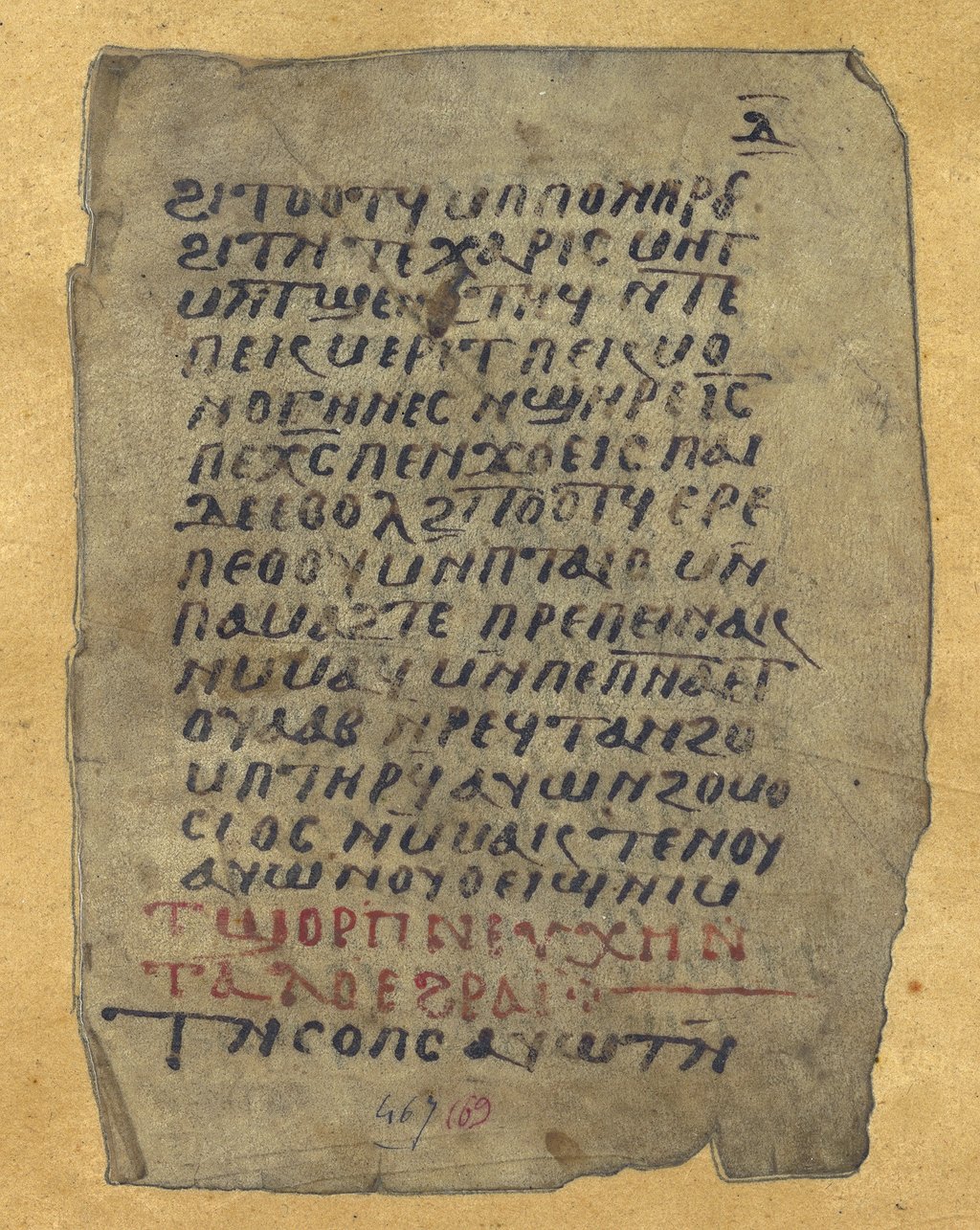 MONB.VD
MONB.VD
In its current state, the parchment codex MONB.VD consists of seven numbered leaves, each with 15-17 lines per page in a column. The small-format codex is written in a bimodular script with a 3-stroke ⲙ and short ⲣ, ϥ, ⲩ. According to Alin Suciu - the great specialist in Sahidic manuscripts - both the small format and the style of the Euchologion MONB.VD are strongly reminiscent of the manuscript from the White Monastery MONB.CQ, which, thanks to the colophon on pag. ⲣ︤ⲝ︥ (160) is precisely dated 1058 AD. For this reason, we date the small-format codex MONB.VD to the 11th century. The pagination of the codex differs from the usual scheme, as it is not the pages but the leaves that are labelled here, both on the right-hand side of the recto and again on the left-hand side of the verso. The first surviving Paris leaf BnF, Copte 12920, f. 156 bears the number ⲇ̄ (4) H/F. In the second Paris leaf Copte 12920, f. 157, the leaf numbering has not been preserved. Nevertheless, one may assume that the missing number was [ⲉ̄] ([5]), since there is textual continuity between the two Paris leaves. The hair-and-flesh sequence in the second Paris leaf is F/H and confirms once again that the two Paris leaves are successive: H/F-F/H. After this, about 45 leaves are missing before the five successive leaves from the British Library, Or. 3580A, f. 14-16 follow. They bear the leaf numbers ⲛ︤ⲁ︥ (51), ⲛ︤ⲃ︥ (52), ⲛ︤ⲅ︥ (53), ⲛ︤ⲇ︥ (54) and ⲛ︤ⲉ︥ (55) and have the usual hair-and-flesh sequence: H/F-F/H-H/F-F/H-H/F. When Crum catalogued these five leaves, he described four of them as two bifolia, but today it is unclear which leaves were attached to each other at the time. Unfortunately, the otherwise well-preserved leaves lack quire numbers and it is therefore not possible today to learn more about the codex structure. The small format of the codex suggests that it may have been a vademecum of a priest or monk. Parallel passages to the other Sahidic Euchologia could not be identified.

Paris, BnF, Copte 129(20), f. 156r
